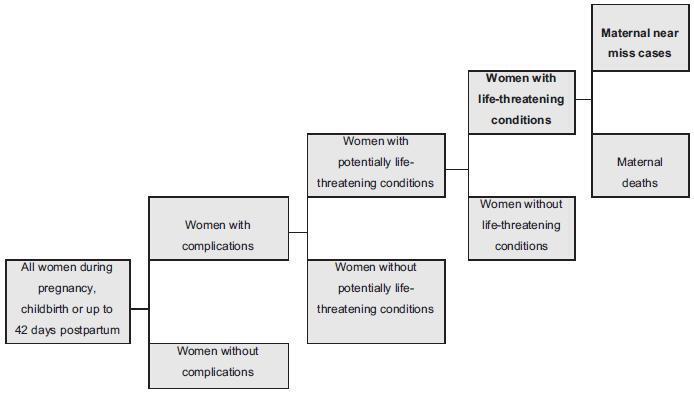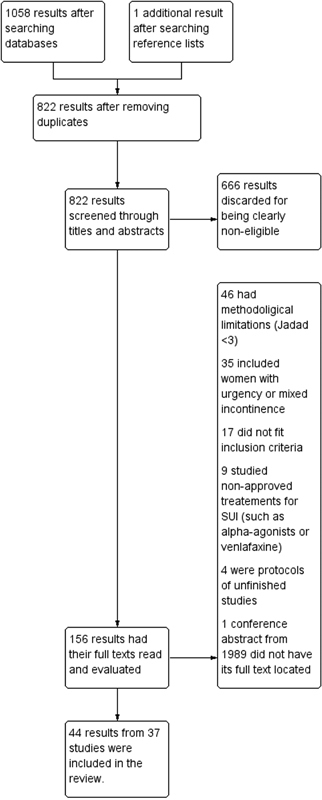-
Original Article04-09-1998
Comparison between active management with oxytocin and expectant management for premature rupture of membranes at term
Revista Brasileira de Ginecologia e Obstetrícia. 1998;20(9):495-501
Abstract
Original ArticleComparison between active management with oxytocin and expectant management for premature rupture of membranes at term
Revista Brasileira de Ginecologia e Obstetrícia. 1998;20(9):495-501
DOI 10.1590/S0100-72031998000900002
Views141See moreObjective: to compare the expectant versus active management with oxytocin in a Brazilian population of pregnant women with premature rupture of membranes (PROM) at term. Methods: a prospective, randomized and multicenter clinical trial was performed, evaluating variables concerning the time from PROM until the onset of labor and delivery, and maternal and neonatal hospitalization periods. Two hundred pregnant women with PROM at term were selected from four public hospitals in São Paulo state, from November 1995 to February 1997. They were randomly divided into two groups: active management, with oxytocin induction of labor until 6 h of PROM; and expectant management, waiting for the spontaneous onset of labor up to 24 h. The data were analyzed with the Epi-Info and SPSS-PC+ packages, using the statistical c², Student’s t and log-rank tests. Results: the results indicate that the differences between the two managements concern to the longer time needed for the expectant management group until onset of labor and delivery, besides the higher number of women and neonates who remained in hospital for more than three days. Conclusions: the time between admission and onset of labor and delivery, and also the latent period were longer in the expectant management group.
-
04-09-1998
Ética em pesquisa
Revista Brasileira de Ginecologia e Obstetrícia. 1998;20(9):494-494
-
04-09-1998
Estudo Controlado e Randomizado para Prevenção de Infecção Pós-Cesárea com Penicilina e Cefalotina
Revista Brasileira de Ginecologia e Obstetrícia. 1998;20(7):424-424
Abstract
Estudo Controlado e Randomizado para Prevenção de Infecção Pós-Cesárea com Penicilina e Cefalotina
Revista Brasileira de Ginecologia e Obstetrícia. 1998;20(7):424-424
DOI 10.1590/S0100-72031998000700011
Views49Estudo Controlado e Randomizado para Prevenção de Infecção Pós-Cesárea com Penicilina e Cefalotina […]See more -
04-09-1998
Estudo Morfológico e Morfométrico do Endométrio de Mulheres na Pós-Menopausa Durante Terapêutica Estrogênica Contínua, Associada ao Acetato de Medroxiprogesterona a Cada Dois, Três e Quatro Meses
Revista Brasileira de Ginecologia e Obstetrícia. 1998;20(7):423-423
Abstract
Estudo Morfológico e Morfométrico do Endométrio de Mulheres na Pós-Menopausa Durante Terapêutica Estrogênica Contínua, Associada ao Acetato de Medroxiprogesterona a Cada Dois, Três e Quatro Meses
Revista Brasileira de Ginecologia e Obstetrícia. 1998;20(7):423-423
DOI 10.1590/S0100-72031998000700009
Views45Estudo Morfológico e Morfométrico do Endométrio de Mulheres na Pós-Menopausa Durante Terapêutica Estrogênica Contínua, Associada ao Acetato de Medroxiprogesterona a Cada Dois, Três e Quatro Meses[…]See more -
04-09-1998
Sangramento e Endometrite em Pacientes Portadoras de DIU Pós-Placentário na Maternidade de Encruzilhada – Recife (PE)
Revista Brasileira de Ginecologia e Obstetrícia. 1998;20(7):423-424
Abstract
Sangramento e Endometrite em Pacientes Portadoras de DIU Pós-Placentário na Maternidade de Encruzilhada – Recife (PE)
Revista Brasileira de Ginecologia e Obstetrícia. 1998;20(7):423-424
DOI 10.1590/S0100-72031998000700010
Views49Sangramento e Endometrite em Pacientes Portadoras de DIU Pós-Placentário na Maternidade de Encruzilhada Recife (PE) […]See more -
Case Report04-09-1998
Complete Mole in Twin Pregnancy: a Case Report
Revista Brasileira de Ginecologia e Obstetrícia. 1998;20(7):415-419
Abstract
Case ReportComplete Mole in Twin Pregnancy: a Case Report
Revista Brasileira de Ginecologia e Obstetrícia. 1998;20(7):415-419
DOI 10.1590/S0100-72031998000700008
Views89Twin pregnancy in which a normal fetus and a complete mole develop at the same time is a rare event. Clinical complications and malignancy are frequent in this type of disease.This report is about a case of a late diagnosis due to the presence of the fetus. The diagnosis was made when the pregnancy was interrupted and then confirmed by histopathological study and flow cytometry. The pregnancy was terminated transpelvically due to massive uterine hemorrhage. The post-molar follow-up showed the persistence of high levels of bhCG. The patient’s complete recovery was achieved after the administration of methotrexate. The diagnosis, natural history, and procedures for this rare disease are discussed in view of this case.
Key-words ChemotherapyComplete hydatidiform moleGestational trophoblastic diseaseHemorrhagePregnancy complicationsTwin pregnancyUltrasonographySee more -
Case Report04-09-1998
Clear Cell Adenocarcinoma of the Endocervix in a 7-year-old Child
Revista Brasileira de Ginecologia e Obstetrícia. 1998;20(7):411-414
Abstract
Case ReportClear Cell Adenocarcinoma of the Endocervix in a 7-year-old Child
Revista Brasileira de Ginecologia e Obstetrícia. 1998;20(7):411-414
DOI 10.1590/S0100-72031998000700007
Views109See moreClear cell adenocarcinoma of the vagina and cervix is a rare disease associated commonly with the use of diethylstilbestrol (DES) during pregnancy. The most commom complaint is irregular vaginal bleeding, which could be confused with vaginitis in children and abnormalities in the hypothalamic-pituitary axis in adolescents. We report a case of clear cell adenocarcinoma of the endocervix in a 7-year-old child who was attended at the Children and Adolescent Gynecology Sector, and we call attention to the diagnosis of genital cancer which, in spite of its rarity at this age, must be considered in children with genital bleeding.
-
Equipments and Methods04-09-1998
Endometrial Resection by Video-Hysteroscopy: experience in a Teaching Hospital
Revista Brasileira de Ginecologia e Obstetrícia. 1998;20(7):405-410
Abstract
Equipments and MethodsEndometrial Resection by Video-Hysteroscopy: experience in a Teaching Hospital
Revista Brasileira de Ginecologia e Obstetrícia. 1998;20(7):405-410
DOI 10.1590/S0100-72031998000700006
Views90See moreObjective: to demonstrate the effectiveness of video-hysteroscopic endometrial resection in the treatment of abnormal uterine bleeding. Patients and method: The authors studied 60 records of patients with abnormal uterine bleeding who did not respond to clinical treatment. Results: eighty-eight percent of the patients had adequate response to the treatment (53% oligomenorrhea and 35% amenorrhea). The complication rate was 8.3% (5 uterine perforations). Conclusion: video-hysteroscopic endometrial resection is an effective technique to treat abnormal uterine bleeding which failed to respond to clinical management. The intra and postoperative complication rates are low.
Search
Search in:
Tag Cloud
Pregnancy (252)Breast neoplasms (104)Pregnancy complications (104)Risk factors (103)Menopause (88)Ultrasonography (83)Cesarean section (78)Prenatal care (71)Endometriosis (70)Obesity (61)Infertility (57)Quality of life (55)prenatal diagnosis (51)Women's health (48)Postpartum period (46)Maternal mortality (45)Pregnant women (45)Breast (44)Prevalence (43)Uterine cervical neoplasms (43)





